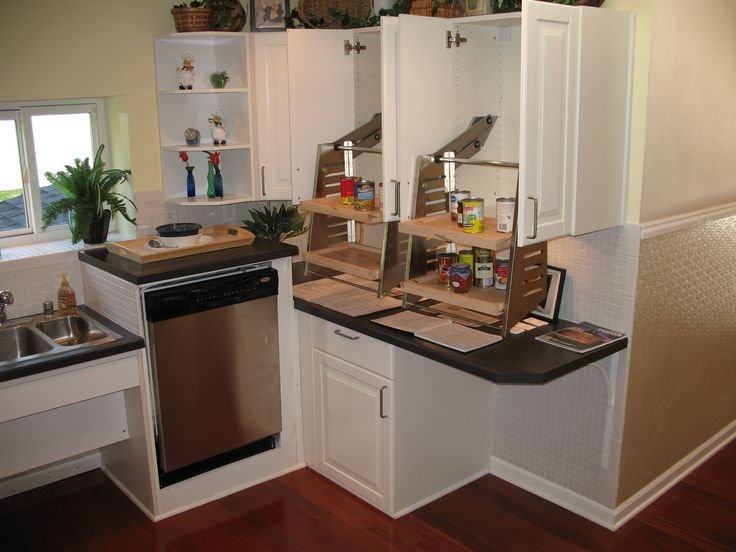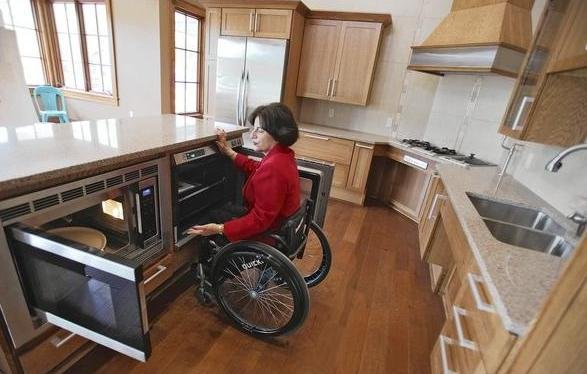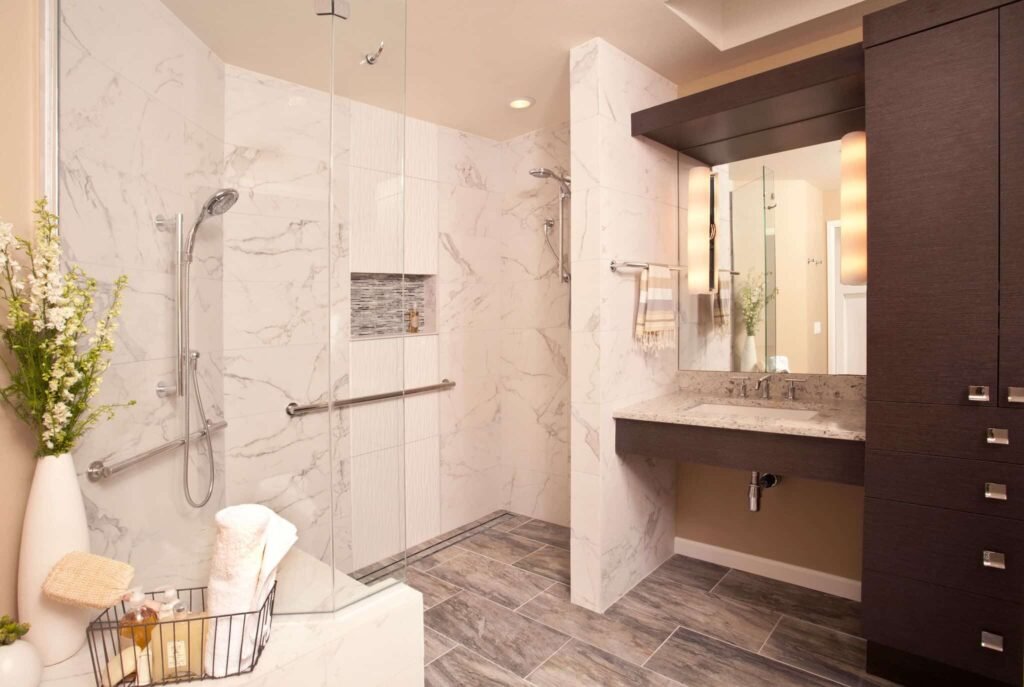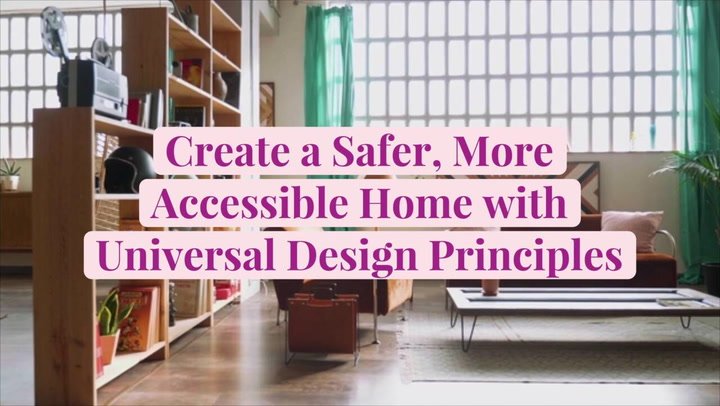Imagine a world where every corner of your home caters flawlessly to your needs, enhancing not just its beauty and functionality but also its accessibility. This vision is at the heart of “Enhancing Home Accessibility: Universal Design Solutions.” Throughout Central Maryland, a dedicated team is transforming homes into universally accessible spaces, making dreams reality for individuals with disabilities, veterans, and anyone aiming to improve their living environment. Whether it’s adapting a property for better mobility, sprucing it up for a lucrative sale, or embarking on comprehensive renovations, these experts combine deep local knowledge with a commitment to inclusivity. From installing cutting-edge assistive technologies to executing strategic remodels that captivate potential buyers, their holistic approach ensures your home supports independence while remaining a beautiful space to live in.

This image is property of www.lifewaymobility.com.
Understanding Universal Design
Principles of Universal Design
Universal Design is a philosophy that encourages the creation of environments accessible to all individuals, regardless of age, ability, or status in life. It encompasses seven key principles: Equitable Use, Flexibility in Use, Simple and Intuitive Use, Perceptible Information, Tolerance for Error, Low Physical Effort, and Size and Space for Approach and Use. By integrating these principles, you can make your home a welcoming and comfortable place for everyone.
Benefits of Implementing Universal Design in Homes
Embracing Universal Design in your home offers numerous benefits. It not only enhances the functionality and accessibility of your space but also increases its market value. As you create an environment that accommodates the diverse needs of individuals, you foster inclusivity and ensure your home can adapt to life’s changes, whether due to aging, disability, or otherwise. Universal Design creates a safer, more comfortable living environment for you and your loved ones.
Differences Between Accessibility and Universal Design
While both accessibility and Universal Design aim to improve usability for individuals with disabilities, there are key differences. Accessibility typically involves modifications or adaptations made to specific areas for people with disabilities. Universal Design, on the other hand, is a broader approach that seeks to make every aspect of your home usable by everyone, regardless of ability, without the need for adaptation or specialized design. Universal Design is about creating an inclusive space that benefits everyone, not just those with special needs.
Assessment of Home Accessibility Needs
Identifying Common Barriers in Homes
To create a more accessible home, start by identifying common barriers. These can include narrow doorways and hallways that restrict mobility device access, high thresholds that pose tripping hazards, and bathrooms and kitchens that do not accommodate those with mobility or dexterity issues. Poor lighting and lack of handrails or grab bars can also make a home less accessible for individuals with visual or physical impairments.
Tools and Methods for Accessibility Assessment
Fortunately, there are several tools and methods available to assess home accessibility. Checklists and guidelines provided by organizations focused on Universal Design and accessibility can offer a good starting point. Additionally, using digital tools or apps designed for accessibility evaluation can help you identify areas of your home that need improvement.
Involving Professionals in Accessibility Evaluation
For a thorough assessment, consider involving professionals who specialize in accessibility evaluations. They can provide detailed insights and recommend specific modifications to enhance your home’s accessibility. These experts understand the nuances of Universal Design principles and can guide you in making informed decisions that cater to the diverse needs of residents and visitors alike.
Widening Doorways and Hallways
Standards for Accessible Doorway Widths
The standard recommendation for accessible doorway widths is at least 32 inches when the door is open at a 90-degree angle. This width allows for easier access for wheelchairs, walkers, and other mobility aids. Hallways should be at least 36 inches wide to accommodate comfortable navigation.
Challenges and Solutions in Widening Structures
Widening doorways and hallways can present structural and aesthetic challenges. However, with careful planning and creative solutions, these modifications can blend seamlessly with your home’s design. Structural reinforcements may be necessary when adjusting load-bearing walls. Consulting with a qualified contractor or architect can ensure these changes are made safely and effectively.
Cost Considerations and ROI
While widening doorways and hallways can be an investment, it’s important to consider the return on investment (ROI). These enhancements can significantly increase your home’s market appeal by making it accessible to a broader range of buyers. Moreover, the cost can be offset by the increased functionality and safety for you and your loved ones, making it a worthwhile investment in the long run.
Ramps and Lifts for Improved Access
Types of Ramps and Their Benefits
Ramps are essential for improving access in homes with steps or elevation differences. Portable, threshold, and custom-built ramps are available to suit various needs. Portable ramps offer flexibility, threshold ramps provide simple solutions for small elevation changes, and custom-built ramps can be designed to match your home’s aesthetics while offering durable access solutions.
Installation Tips for Home Lifts
Home lifts can significantly enhance accessibility between floors. When installing a lift, consider the size and weight capacity needed to accommodate mobility devices. Ensure the installation complies with local building codes and standards. Professional installation is recommended to secure safe and reliable functionality.
Maintaining Aesthetics While Ensuring Functionality
Incorporating ramps and lifts doesn’t mean sacrificing your home’s aesthetics. Many solutions are designed with both functionality and style in mind. Custom options can integrate materials and designs that complement your home, ensuring these accessibility features blend seamlessly with its overall look.

This image is property of curemedical.com.
Bathroom Accessibility Modifications
Key Features of an Accessible Bathroom
An accessible bathroom includes features like walk-in showers with no-step entries, grab bars, adjustable shower heads, wider doorways, and non-slip flooring. These modifications ensure safety and independence for individuals with mobility challenges.
Choosing the Right Fixtures and Fittings
Select fixtures and fittings that enhance accessibility, such as lever-style faucet handles, higher toilet seats, and under-sink clearance for wheelchair users. Ensure that these fixtures are within easy reach and can be used with minimal effort.
Waterproofing and Safety Considerations
Waterproofing is crucial in preventing slips and falls in the bathroom. Use non-slip tiles and install adequate drainage to keep floors dry. Additionally, consider employing a professional to ensure all modifications are made correctly and safely, adhering to building codes and standards.
Kitchen Remodeling for Universal Access
Adjustable Countertops and Cabinet Designs
Adjustable countertops and cabinet designs can make your kitchen more accessible. Consider installing countertops at varying heights to accommodate both standing and seated users. Pull-down cabinet systems and drawers with easy-pull handles or touch-open technology can increase usability for everyone.
Appliance Selection for Universal Use
Choose appliances that are designed with accessibility in mind, such as side-by-side refrigerators, front-loading dishwashers and laundry machines, and ovens with front controls. These features can make a significant difference in usability for individuals with limited mobility or reach.
Flooring Options to Enhance Safety and Mobility
Select flooring materials that are slip-resistant and durable, yet comfortable for standing. Materials like cork or rubber can be more forgiving for falls and can reduce fatigue, making them excellent choices for enhancing kitchen safety and mobility.

This image is property of www.neilkelly.com.
Implementing Smart Home Technology
Voice-Activated Systems for Increased Independence
Voice-activated systems can significantly increase independence for individuals with mobility or dexterity issues. These technologies allow for hands-free control of lighting, thermostats, door locks, and entertainment systems, enhancing ease of use and accessibility throughout the home.
Automated Lighting and Climate Control
Automated lighting systems can adjust based on natural light levels or time of day, ensuring optimal lighting conditions. Climate control systems can be programmed or remotely controlled to maintain comfortable temperatures, contributing to a safer, more comfortable living environment.
Security Features for Peace of Mind
Smart home security features, such as video doorbells and automated lock systems, offer increased peace of mind. These systems provide easy monitoring and control, ensuring safety and security for all residents, especially those with mobility challenges.
Floor Plan Alterations for Open Living Spaces
The Impact of Open Floor Plans on Accessibility
Open floor plans can greatly enhance accessibility by removing barriers and walls that restrict movement. This layout promotes easier navigation and communication within the home, creating a more flexible and adaptable living environment.
Strategies for Removing Barriers and Walls
When considering removing barriers and walls, it’s essential to consult with a structural engineer or architect to ensure the integrity of your home is not compromised. Strategic planning can identify non-load-bearing walls that can be removed or altered to create open living spaces without affecting the home’s stability.
Creating Multifunctional Spaces
Open floor plans offer the opportunity to create multifunctional spaces that can adapt to various needs. Consider flexible furniture arrangements and modular systems that can be easily reconfigured for different activities, ensuring your home can accommodate diverse uses and lifestyles.

This image is property of www.coastessential.com.
Exterior Modifications for Accessibility
Creating Accessible Entryways and Paths
Accessible entryways and paths are crucial for ensuring easy access to and from your home. Consider installing ramps or level entryways, widening paths, and ensuring there are no tripping hazards. Materials should be chosen for durability and slip resistance to provide safe navigation in all weather conditions.
Landscaping Solutions for Easier Navigation
Landscaping can also enhance outdoor accessibility. Select plants that do not obstruct pathways or grow too rapidly, and incorporate raised beds or container gardens for easier maintenance. Strategic landscaping can create a beautiful yet functional outdoor space that everyone can enjoy.
Outdoor Lighting for Safety and Security
Good outdoor lighting is essential for safety and security, illuminating pathways, entryways, and obstacles. Choose lighting fixtures that provide adequate illumination without creating glare. Motion sensors and timers can offer convenience and energy efficiency, ensuring outdoor areas are safely lit when needed.
Sustainable and Eco-Friendly Accessibility Solutions
Incorporating Green Materials in Renovations
Incorporating green materials in renovations not only supports the environment but can also improve indoor air quality and reduce energy costs. Sustainable options like bamboo flooring, low-VOC paints, and recycled materials contribute to a healthier, more eco-friendly home.
Energy-Efficient Appliances and Fixtures
Selecting energy-efficient appliances and fixtures reduces energy consumption, lowers utility bills, and minimizes your carbon footprint. Look for Energy Star-rated products that offer the best efficiency without sacrificing performance.
Benefits of Sustainable Design for Universal Living
Sustainable design principles align perfectly with Universal Design by focusing on long-term usability and minimal environmental impact. These practices ensure your home is accessible, comfortable, and eco-friendly, supporting a healthier lifestyle for you and the planet.

This image is property of cdn.jwplayer.com.